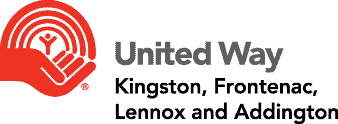Prevent and End Youth Homelessness
The following selection on how to Prevent and End Youth Homelessness was first published by Melanie Redman on HomelessHub.ca and we’ve linked to the full article at the bottom.

One of the best examples of Collective Impact I’ve seen in action at the community level is in Kingston, Ontario. Kingston was one of the first MLC pilot project communities. Over the last five years, with leadership from the United Way KFLA, Kingston has done the heavy lifting of not only developing a strategy but implementing that strategy. Now Kingston is starting to see the fruits of their labour manifest in positive results for young people! They’re moving the dial on the issue of youth homelessness, and in the process, sharing their rich learning with the rest of us. Here is their recent report that illustrates just what’s happening!
I recently had the opportunity to ask Bhavana Varma, President & CEO of the United Way KFLA, a few questions about their fantastic efforts in Kingston.
Q: Why did your community decide to prioritize youth homelessness?
A: Our United Way had facilitated the development of a community plan on homelessness a couple of times and, in each plan, we noted the need to address youth homelessness. It was only when we signed up to be a pilot with MLC, that we started looking at the data and realized we needed to have a targeted approach. Speaking to youth who had experienced homelessness, and learning more about the issue from our community partners, reinforced the need to address the issue and it was their conversations that compelled us to proceed with the development and implementation of the plan to end youth homelessness.
Q: What do you think were key drivers for your success?
A: The plan was informed and developed by the voice of youth; this was critical to understanding the issue and potential solutions. Secondly, the support of community partners and their engagement – agencies, school boards, municipal government, and representatives from all sectors – has a significant impact on the plan’s success. We were also fortunate to get funding at the start (Innoweave) that enabled us to provide dedicated backbone coordination and funding to support the development of an education and awareness campaign. Using the Collective Impact model has enabled us to work collaboratively on this issue, using our collective efforts to understand and address the root causes of this issue. All these factors contributed to our success.
Q: What are some of the key lessons learned?
A: Some of the key lessons learned are:
- Listening! The importance of listening to people who are impacted by an issue – the voice of youth is critical in framing the issue and the solutions that flow from this collective work. Not being a service provider ourselves helped us bring our amazing frontline agencies together to listen to their solutions and ideas.
- Funding is important – as a fundraiser and a funder, it was helpful to be able to find and invest resources to implement the pilot programs and the strategies developed through the process.
- Being flexible and willing to change course as and when needed. The Collective Impact process can be messy and challenging at times. As we headed down one direction, we sometimes learned that we needed to course-correct; allowing that to happen made all the difference.
- Allow more time than you anticipate. We heard this piece of advice early on in the process and quickly learned that we need to allow ourselves time; this helped us continue the momentum and move forward.
Q: Where does Kingston go from here?
A: While we have had many successes, we still have areas we need to continue to work through. We are in the process of developing strategies to address rural youth homelessness. We are looking at addressing some barriers that were identified by youth through the course of the initiative, and hope to do some groundbreaking work on how to help youth facing crises, youth with mental health issues. We are also starting the process of learning more about issues facing Indigenous youth and are giving ourselves time to understand the best way to go about this.
– Thanks so much to Bhavana and team for sharing these important insights. Over the coming months, we will continue to shine the spotlight on communities that are moving the dial on youth homelessness. Through shared learning and mutual support, we can all go further faster to ensure that every young person in Canada has what they need and deserve to thrive!
Read the full article on HomelessHub.ca
Read our Report on Youth Homelessness 2018







Leave a Reply